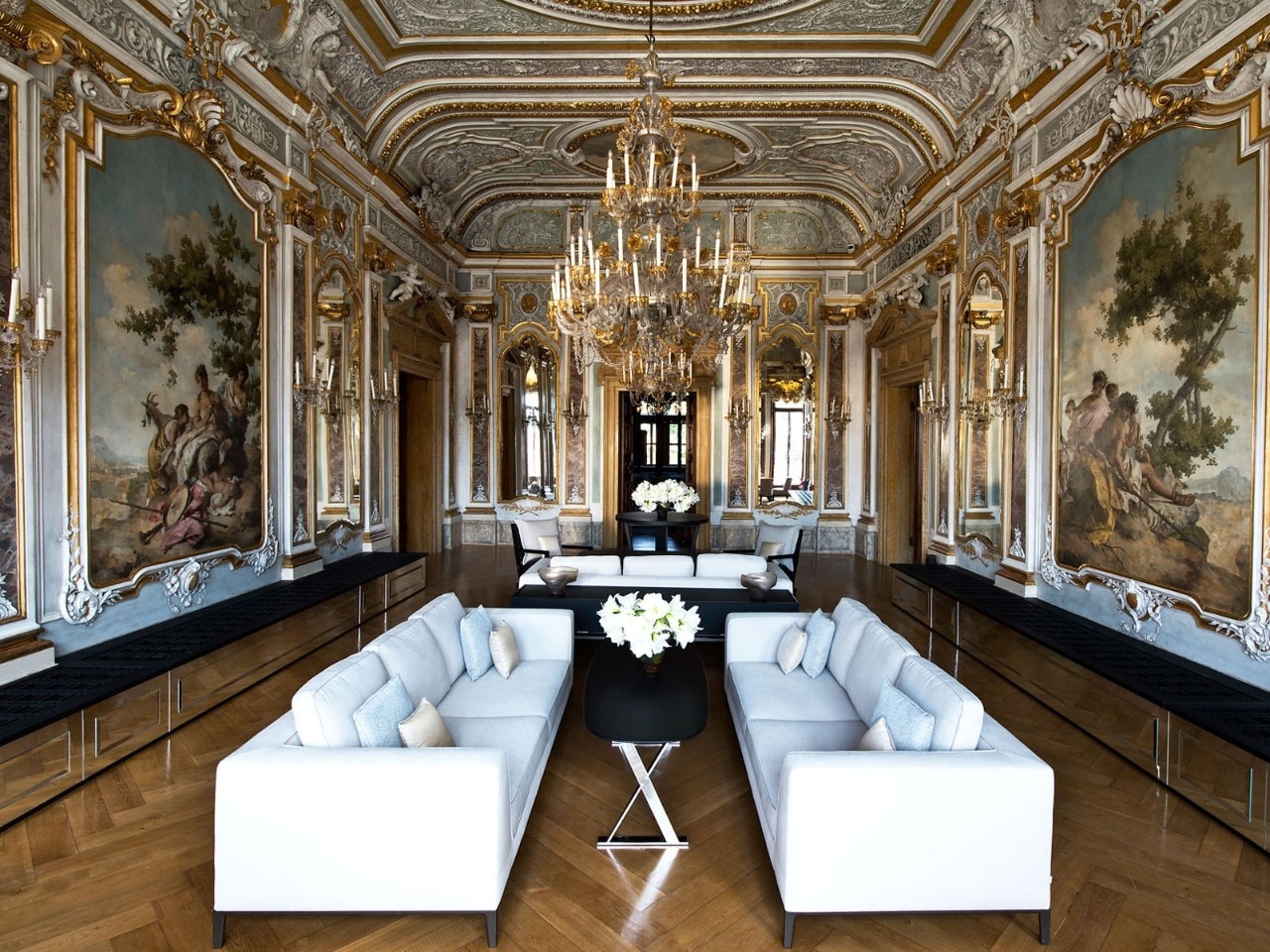This is Where to Stay in Venice

Today, the Aman Canal Grande is a luxury hotel, but this 16th-century Venetian palazzo was once a playground for the rich and famous.
As a swank vaporetto motors gently along the narrow waterways of Venice, the theatre of the world’s most romantic city unfolds. Skinny black gondolas glide past crumbling Italian mansions, fairytale bridges come and go, and accordion-playing buskers serenade young couples in canal-side cafés. Then, as its engine burbles to a near stop, the water taxi bumps alongside the jetty of the hotel Aman Canal Grande, once one of Venice’s oldest – and possibly most opulent – private homes.
In its long history, Palazzo Papadopoli – the 16th-century building that houses the hotel – has been home to some of the city’s most affluent families, including the Papadopolis, wealthy bankers from Corfu who acquired the palazzo in 1864 and commissioned a major renovation.
“In their heyday, the Papadopolis were so rich that Venetians used to say they owned a wave on the ocean,” says Count Giberto Arrivabene, a descendent of the family and current owner of the palazzo. “When my father was a little boy, 86 people used to live here – six were family members and 80 were staff. One of them was employed just to wind the clocks in the palazzo.”
The building’s grand past is showcased to stunning effect in the high-ceilinged hall on its first floor – now the main dining room – which is lined with restored murals, frescoes and reliefs. The cream of Venetian society once partied within these walls, while last year, Hollywood royalty celebrated the wedding of George Clooney and Amal Alamuddin here.
The count and his family live on the fifth (and uppermost) floor of the palazzo, with the rest of the building leased to Aman Resorts. On the fourth floor you’ll find some of the hotel’s best suites – including Papadopoli Stanza, which has Grand Canal views and an ensuite the size of the average Australian living room. “It’s where my room used to be when I was a little boy,” recalls the count, whose first memories are of running through the palazzo’s long corridors, with attendants chasing him.
The count shares stories of darker times, too: his father – a decorated naval officer –told him that during World War II he gave Jewish people refuge in the palazzo’s attic. “Thankfully, the Gestapo didn’t find them when they came looking,” says Arrivabene. The room is “strictly off limits” now.
Most other parts of the 24-room hotel are open to guests, including a rooftop terrace with sunrise views over Venice’s spires and two private gardens. “When the Papadopolis bought the palazzo, they razed two adjoining buildings to the ground just to make room for these gardens,” says Arrivabene. The one out the front doubles as an alfresco restaurant – a place for guests to gaze upon the sublime canal where, along with the passing vaporetti, they become part of another scene in the ongoing theatre of Venice. 


